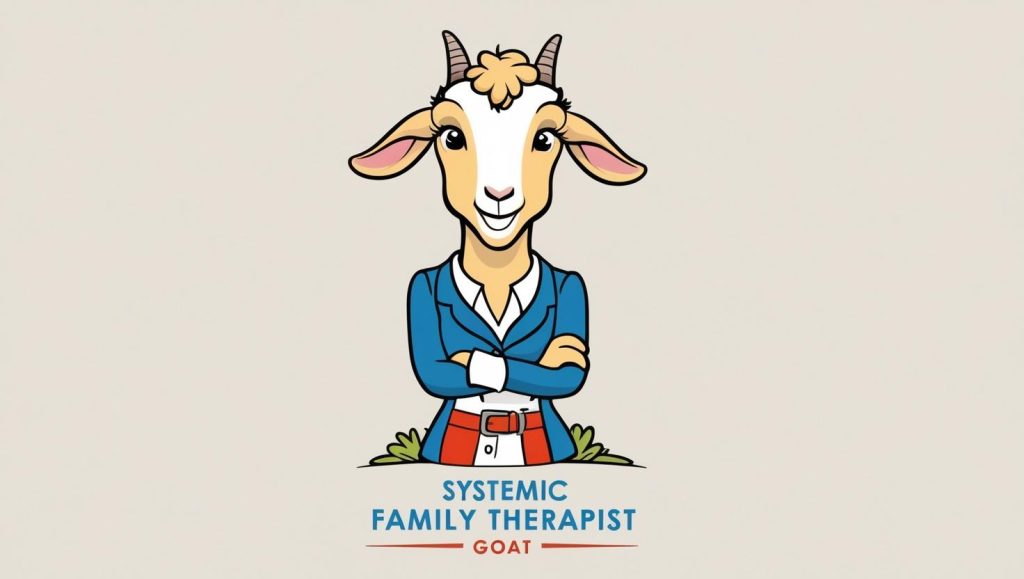
Category: Resource
-
💡 Why a Strength-Based, Relational Approach Matters💡

When families are navigating behavioral challenges — whether it’s a child acting out, conflict between siblings, or ongoing tension between caregivers — the natural impulse is to turn to the therapist as the “expert” to fix the problem. In that moment, families often believe that they have little to offer, that the solution must come from outside of them, and that their relationships and history have little to do with the issue at hand.
But as systemic family therapists, we know that this approach is incomplete. In fact, it can be harmful. When families start to believe they are powerless in the face of problems, they become passive observers rather than active participants in their own growth. And when therapists reinforce this dynamic — intentionally or not — we rob families of their agency and diminish the power of the relational system.
A strength-based, relational approach turns this on its head.
Rather than focusing solely on what’s broken, we look for what’s working — the small moments of connection, care, resilience, and effort that already exist within the family system. We ask ourselves:
- Where are the strengths hiding in plain sight?
- How can we build on those to address behavioral challenges together?
- What has this family survived, overcome, or adapted to before?
This perspective allows us to solve problems relationally, not just behaviorally. A child’s acting-out behavior isn’t addressed in isolation but understood within the context of relationships, stressors, patterns, and roles in the family. We see behavior as communication, shaped by the family’s environment, expectations, and connection.
When families experience this shift, everything changes. They stop waiting for the expert to deliver answers and begin participating in creating solutions. They regain a sense of capability and confidence, recognizing that their relationships are not only part of the problem — but the foundation of the solution.
At PCFTTC, we believe that every family holds the raw material for their own healing. Our role is to uncover, name, and strengthen those existing resources while guiding families toward healthier, more connected ways of being together.
Strength-based, relational work isn’t about being soft — it’s about being strategic, respectful, and effective. It’s how we create change that lasts.
-
CHECK OUT THIS ARTICLE FROM McCrystal Group: Adaptable, But Anchored: The Hidden Strength of Character in Leadership

Fast can be fragile. Adaptability without character can break when it matters most.
Nearly a decade ago, Team of Teams changed how we think about building organizations. It showed us that in complex, high-velocity environments, speed and adaptability come not from control but from trust, shared consciousness, common purpose, and empowered execution.
But, in a world of rapid technological change and moral booby traps around every corner, adaptability alone isn’t enough. Because what holds systems together under pressure isn’t just structure. It’s character.
The hidden variable in high-performing organizations isn’t just how you lead. It’s who you are while leading.That’s where On Character enters, the latest book from Stan McChrystal, examining the shifting focus from systems to the individual. Exceptional leaders don’t just drive results; they embody values like humility, integrity, and selflessness. These aren’t soft skills. They are the foundation of trust, loyalty, and long-term impact.
Together, Team of Teams and On Character offer a simple but profound truth:

You can build a highly adaptive organization, but it will only be as strong as the character of its members. Speed is necessary. Adaptability is required. But trust and character are what endure.
Leaders must question their convictions and consider how deep their values truly go. Ask yourself:
- Am I exhibiting the behaviors I expect of my people?
- Do my decisions reflect conviction or convenience?
- Would my team describe me as someone worth following, especially when it’s hard?
As you reflect on your own contribution to the “culture + system = sustained high-performance” equation, we invite you to explore our resources from the Team of Teams 10th Anniversary collection, designed to help leaders build adaptable systems and enduring character.
Related Insights:
- Leadership Behaviors Needed in a Complex World
- Lead Like a Gardener
- Team of Teams® Executive Summary Guide
- The 4 Secrets High-Performance Organizations Know About Teams
Copyright © 2025 McChrystal Group, All rights reserved.
-
The Power of Collective Support: What The Turnaround Teaches Us About Social Ecology and Strength-Based Practice
Netflix Link: https://www.netflix.com/us/title/81945091?s=i&trkid=258593161&vlang=en
In The Turnaround, a Netflix short documentary, we witness a rare and powerful moment in sports: a city choosing compassion over criticism. When Philadelphia Phillies shortstop Trea Turner struggled during the 2023 MLB season, the typical response might have been boos and frustration. But what happened instead was extraordinary—fan Jon McCann called for a standing ovation. The city responded. The crowd stood, cheered, and poured belief into a player at one of his lowest moments. What followed was a surge in Turner’s performance, and a deep emotional shift in how fans and athletes connected.
At PCFTTC, we see this moment as a real-world example of social ecology in action. Just like in therapy, healing and growth don’t happen in isolation. People are shaped by their environments—families, communities, systems of support. When one part of the system chooses empathy and encouragement over shame or blame, it reverberates.
Turner’s story reminds us why being strength-based and context-sensitive matters. His performance issues weren’t just about mechanics—they were about mindset, pressure, and the invisible weight of expectations. Instead of pathologizing the “problem” (Turner’s slump), the community looked at the context and chose to support rather than punish. In doing so, they acted as a trauma-informed system—offering safety, connection, and belief.
This is precisely the lens we use in Ecosystemic Structural Family Therapy (ESFT). When working with families, we don’t just treat behaviors—we look at the context that sustains them. We seek to understand before we intervene. We ask: what would happen if this family were met with belief instead of blame?
The Turnaround teaches us that systemic change begins with one choice: to hold dignity and possibility in the face of struggle. As therapists, supervisors, and healers, we can ask ourselves: how do we create our own “standing ovation” moments for the families we serve? How do we choose hope, every time?
Let this story inspire us to keep building systems of care that are trauma-informed, context-sensitive, and full of the kind of strength-based belief that can change lives.
-
More Referrals, Less Isolation: How Networking Supports Systemic Family Therapists

Therapists dedicate their lives to supporting others, but who supports them? The challenge of professional isolation is real, especially for systemic family therapists who often navigate complex family dynamics, crisis situations, and emotionally demanding cases. Without a strong professional network, therapists can experience burnout, self-doubt, and limited growth opportunities.
For many clinicians, private practice or agency work can feel isolating—especially when faced with difficult cases that require outside perspectives, additional resources, or simply the reassurance that they are not alone in their challenges. Without a solid peer network, therapists may find themselves second-guessing their interventions or struggling to find new client referrals. This not only impacts their personal well-being but also the quality of care they can provide to families.
Building a Professional Network: A Key to Growth
One of the best ways to combat professional isolation is by intentionally cultivating relationships with colleagues in the field. These connections do more than just provide emotional support—they also serve as an ongoing learning resource, a space for case consultation, and a means of growing a therapist’s referral base.
Therapists who actively participate in professional communities gain:
- Access to Peer Supervision and Mentorship – No therapist should feel like they have to figure everything out alone. Having experienced colleagues to consult on complex cases helps ensure ethical, effective care for clients.
- More Referral Opportunities – Clients need different levels and types of care. Referring clients to colleagues who specialize in certain areas fosters trust within the professional community and ensures families receive the right support. Likewise, therapists who are well-connected are more likely to receive referrals for their own areas of expertise.
- Greater Recognition in the Field – Visibility within peer networks, training institutions, and professional associations increases a therapist’s credibility, professional opportunities, and overall impact on the field.
- A Stronger Sense of Belonging – Knowing that there is a community of like-minded professionals who understand the unique challenges of systemic therapy reduces stress, prevents burnout, and enhances job satisfaction.
Breaking Free from Isolation: Practical Steps
If you’re feeling disconnected, consider taking these steps:
- Join Professional Organizations – Engage with networks like AAMFT or the Philadelphia Child and Family Therapy Training Center to build relationships and stay informed.
- Attend Training and Supervision Groups – Learning alongside peers fosters growth and camaraderie while refining clinical skills.
- Offer and Accept Case Consultations – Consulting with peers on challenging cases creates a collaborative learning environment where everyone benefits.
- Engage in Online and In-Person Communities – Whether it’s a LinkedIn group, a therapy forum, or in-person meetups, these spaces provide connection and resource-sharing.
At PCFTTC, we believe systemic family therapy is not just about supporting clients—it’s about building a strong, interconnected professional community. The more connected we are as therapists, the more effective we can be for the families we serve.
Let’s move away from isolation and toward collaboration. Together, we can build a network that strengthens both our profession and the families we work with.
-
Crisis-Ready: Managing Emergencies Through Greater Client Engagement

In systemic family therapy, crisis situations can arise suddenly, leaving therapists scrambling to respond. Whether it’s a sudden escalation of family conflict, suicidal ideation, or child welfare concerns, the ability to manage crises effectively is critical. Therapists who feel unequipped to handle these high-stakes moments may experience anxiety, frustration, and even self-doubt about their ability to intervene effectively. However, one of the most underutilized strategies for crisis prevention is actually greater client engagement.
When families are deeply engaged in the therapy process, they develop skills and resilience that reduce the likelihood of crises occurring in the first place. Engagement goes beyond just showing up for sessions—it means fostering a collaborative therapeutic alliance where clients take an active role in setting goals, identifying obstacles, and practicing new skills outside of therapy. When clients feel truly heard and understood, they are more likely to communicate struggles early, follow through with interventions, and build internal and external support systems.
How Can Therapists Enhance Client Engagement for Crisis Prevention?
- Empower Families Through Enactments – Instead of only discussing issues, enactments allow families to practice real-time interactions in session. This helps them develop new patterns of responding before a crisis occurs.
- Use Intentional Reframing – Helping clients see their struggles through a systemic lens rather than an individual failure can reduce shame and increase motivation for change.
- Develop a Crisis-Response Plan Together – Rather than waiting for an emergency, therapists can co-create structured safety plans with clients that include support systems, de-escalation strategies, and clear steps to follow in a crisis.
- Encourage Connection to Community Resources – Engaging clients with their ecosystem including extended kin, faith communities, school supports, and social services can create a more resilient safety net that prevents them from feeling isolated during difficult times.
From Crisis Response to Crisis Prevention
Too often, therapists feel overwhelmed when faced with a crisis, fearing that their interventions will not be enough. But by shifting the focus from reactive crisis management to proactive client engagement, systemic family therapists can significantly reduce emergency situations, strengthen therapeutic relationships, and improve overall treatment effectiveness.
At PCFTTC, we believe in equipping therapists with competency-based tools to create safe, engaged, and empowered families. By focusing on engagement early on, we don’t just respond to crises—we prevent them from happening in the first place.
-
Work-Life Balance & Burnout: How Systemic Therapists Can Reclaim Their Energy

Burnout is real—but it doesn’t have to be inevitable.
As systemic family therapists, we dedicate ourselves to supporting families through some of their most difficult challenges. We hold space for pain, navigate complex relational dynamics, and work tirelessly to create meaningful change. But in the process, we often forget one crucial factor—ourselves.
Burnout and compassion fatigue are alarmingly common in our field. The emotional demands of therapy, coupled with long hours and the pressure to “fix” problems, can leave even the most passionate therapists feeling drained. And when burnout sets in, not only do we suffer—our clients do, too.
So how do we protect our energy while still showing up fully for the families we serve?
1️⃣ Set Boundaries & Honor Them
Many therapists struggle to set limits around their work, feeling guilty if they’re not constantly available to clients. But the truth is, a burnt-out therapist is not an effective therapist. Set clear work hours, avoid taking calls or answering emails outside of those times, and give yourself permission to say “no” to extra obligations that don’t serve you.
2️⃣ Prioritize Work-Life Balance
A fulfilling personal life is not a luxury—it’s a necessity. Engage in activities that bring you joy and relaxation, whether that’s spending time with loved ones, exercising, or engaging in hobbies. Remember: Your well-being is just as important as your clients’.
3️⃣ Build a Strong Peer Support Network
Isolation makes burnout worse. Surround yourself with other systemic therapists who understand the unique challenges of this work. Whether through supervision groups, professional organizations, or casual meetups, connecting with others in the field provides validation, support, and fresh perspectives.
4️⃣ Keep Growing Through Professional Development
Burnout can sometimes stem from feeling stuck or stagnant in our work. Engaging in continued learning—whether through workshops, consultation groups, or advanced training—can reignite our passion and remind us why we love this work in the first place.
5️⃣ Remember: A Healthy Therapist = Better Therapy
When we take care of ourselves, we show up more present, engaged, and effective in the therapy room. Prioritizing our own well-being is not selfish—it’s a necessary part of providing the best possible care for the families who trust us.
🔥 Therapists, how do you protect your energy and prevent burnout? Share your strategies in the comments!
-
Transforming Ineffective Methods: How Professional Development Creates Positive Outcomes

As systemic family therapists, we are deeply invested in the well-being of our clients. However, every therapist faces moments of doubt—wondering whether their interventions are effective or if they are truly facilitating change. The fear of ineffectiveness can be daunting, but professional development provides the tools and confidence needed to refine our methods and improve client outcomes.
The Challenge of Stagnation
The evolving nature of family dynamics and mental health challenges means that therapeutic approaches must also evolve. Without continuous learning, therapists risk falling into patterns that may not fully address the complexities of their clients’ needs. Ineffectiveness can stem from outdated techniques, a lack of new insights, or difficulty adapting to diverse family structures and experiences.
How Professional Development Bridges the Gap
Engaging in ongoing training, workshops, and peer consultations allows therapists to:
- Stay Updated on Best Practices – Evidence-based approaches are always advancing. Professional development ensures therapists stay informed about the latest techniques, such as Ecosystemic Structural Family Therapy (ESFT) or trauma-informed care.
- Enhance Clinical Skills – Through supervision and training, therapists can refine their interventions, improve their assessment strategies, and apply systemic principles with greater precision.
- Boost Confidence in Treatment Approaches – Learning from experienced professionals and engaging in case discussions help therapists feel more assured in their ability to navigate complex cases.
- Increase Positive Client Outcomes – When therapists grow, so do their clients. A well-trained therapist is better equipped to foster meaningful change in families, leading to improved relationships and emotional well-being.
Making Professional Growth a Priority
Therapists should seek out continuing education opportunities, participate in peer networks, and remain open to feedback. Investing in professional development not only enhances therapeutic effectiveness but also ensures clients receive the highest quality of care.
At PCFTTC, we offer training programs designed to equip therapists with the skills needed to succeed. Let’s commit to lifelong learning, so we can continue to create positive, lasting impacts on the families we serve.
How do you stay engaged in professional development? Share your experiences below!
-
When the Caregiver Is Hopeless, They Need a Reframe!

As systemic family therapists, we often meet caregivers who feel exhausted, overwhelmed, and hopeless. They’ve tried everything, yet nothing seems to change. The child’s behaviors persist, stress mounts, and they begin to believe that their situation is unfixable. This is where reframing becomes one of the most powerful tools we have.
Why Do Caregivers Lose Hope?
Caregivers become hopeless when they no longer believe in their ability to make a difference in their child’s life. This can happen for many reasons:
- They’ve tried multiple strategies without success.
- They feel blamed or judged by professionals.
- They are emotionally drained from ongoing struggles.
- They see their child’s behaviors as permanent and unchangeable.
When a caregiver loses hope, their ability to be an effective leader in the family weakens, making it even harder for change to happen. This is why reframing is essential—it shifts their perspective and helps them see a path forward.
The Power of Reframing
Reframing isn’t about ignoring a caregiver’s struggles or dismissing their pain. It’s about helping them see things differently so they can regain a sense of agency, purpose, and confidence.
Example 1
Caregiver: “They cut themselves again!”
Therapist: “This is a high stakes situation…it makes sense you are scared you don’t want to lose your child to depression…you know what it takes to overcome depression…I can’t help but wonder how you did that…can you tell me about that…”
Example 2
Caregiver: “They have to go to the hospital they want to die.”
Therapist: “Oh my…your child believes they have burdened you and killing themselves is the only option they have…It is tragic how they aren’t experiencing the love you have for them…”
Example 3
Caregiver: “The kid is the problem…not me”
Therapist: “Can I tell you where I think we need your leadership? The unwanted guest of addiction has everyone bound to secrecy…Can you help me take stand against the addiction haunting this family?!”
Reframing Is Isomorphic
The way we reframe for caregivers is isomorphic to what we want them to do for their child. Just as caregivers need to see their efforts in a new light, children need caregivers who can see beyond their behaviors and recognize their underlying needs.
Final Thoughts
When caregivers feel hopeless, they don’t need more strategies or interventions, they need a shift in perspective that restores their confidence. As therapists, our job is to help them see their strength, their efforts, and their ability to create change—because once a caregiver believes in themselves again, hope returns, and change becomes possible.
💡 Want to learn more about using reframing in systemic family therapy? Stay connected with our blog for insights, training opportunities, and expert guidance!
